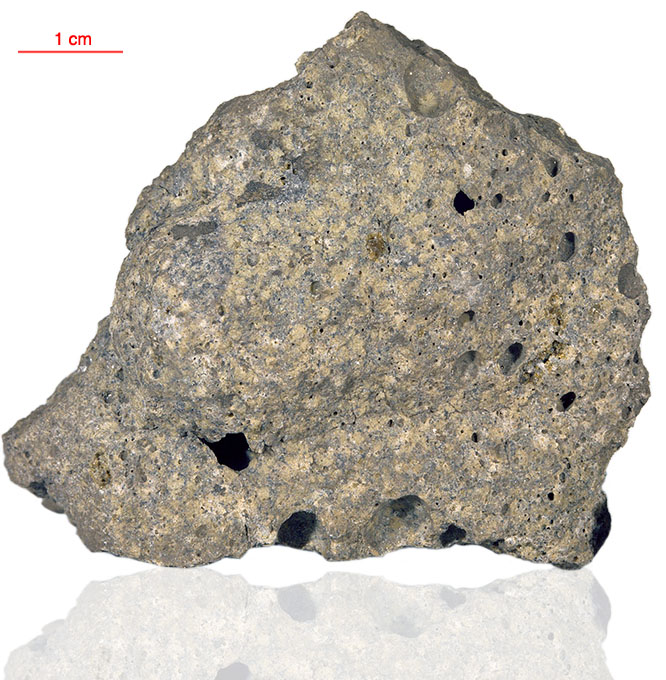
Fact sheet
76135 has been described as a vesicular, clast- bearing, poikilitic impact melt breccia and as a vesicular micronorite. It is holocrystalline and apparently has two generations of vesicles. Rotation 1 shows a rounded fragment of breccia (breccia in breccia) and a large corroded pyroxene clast. Rotation 2 shows an area dominated by a large interstitial pyroxene crystal enclosing mainly plagioclase feldspar.
The sample weighed 133.5 grams before analysis and has not been dated.
Further details of this and other Apollo samples are here: http://curator.jsc.nasa.gov/lunar/
Apollo 17, the final manned landing mission, had two objectives: to obtain samples of ancient rocks from the lunar highlands and to look for evidence of younger volcanic activity on the valley floor.
This small Collection contains material deriving from both periods, including igneous rocks around 4.3 billion years old from the lunar highlands as well as younger volcanic samples dating from about 3.6 billion years ago.
Apollo 17 was launched on 7 December 1972.






